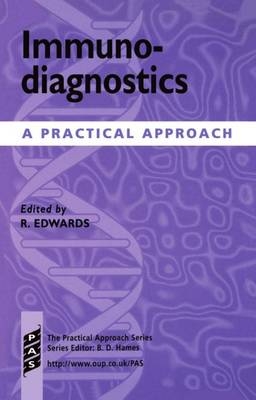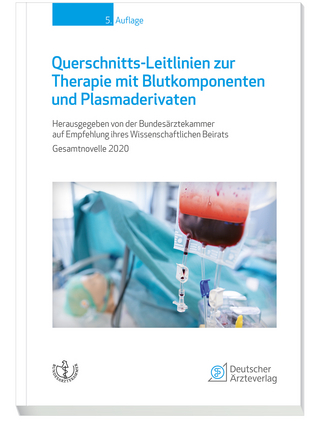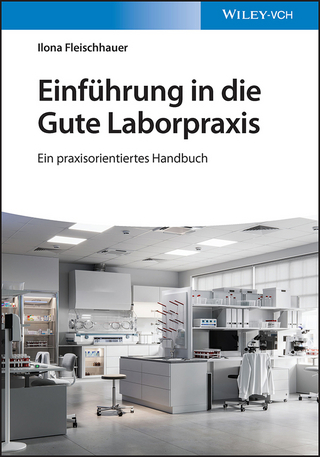
Immunodiagnostics
A Practical Approach
Seiten
1999
Oxford University Press (Verlag)
978-0-19-963589-4 (ISBN)
Oxford University Press (Verlag)
978-0-19-963589-4 (ISBN)
- Titel ist leider vergriffen;
keine Neuauflage - Artikel merken
Immunodiagnostic tests are analytical methods that use antibodies as reagents. The most widespread and obvious use is in clinical applications, but immunodiagnostics are used in a wide range of scientific disciplines, such as forensic science and food analysis, and in a number of different ways.
Immunodiagnostic tests are analytical methods that use antibodies as reagents whose results are used to aid diagnosis and are widely used in many scientific disciplines and in many different ways. Perhaps the most widespread and obvious use is in clinical applications, but immunodiagnostic tests are also used in other fields such as forensic science and environmental and food analysis. The different types of test range from simple manual methods to fully automated
systems with sophisticated integrated detection. Immunodiagnostics: A Practical Approach starts off by explaining the principles and development of immunodiagnostic tests, specifically the use of radioisotopes as tracers. Chapter 2 explains the use of solid-phase supports to bind immunoreagents.
Enzymes are widely used as labels in immunoassays and their use with colourimetric, fluorimetric, and chemiluminescent detection systems is described. The use of enzymes as labels reflects the move away from radioisotopes and one of the most powerful non- radioisotpoc prodcedures is the time-resolved fluorescence assay. Enzymes can also be used as a simple method of obtaining high performance from immunodiagnostics and this application is covered later in the book. The next set of techniques
to be described are light scattering techniques, which can be used in either simple manual assays or in sophisticated automated procedures. The penultimate chapter describes the principles of automation of immunodiagnostic tests. The last topic to be discussed is that of quality
assurance.
Immunodiagnostic tests are analytical methods that use antibodies as reagents whose results are used to aid diagnosis and are widely used in many scientific disciplines and in many different ways. Perhaps the most widespread and obvious use is in clinical applications, but immunodiagnostic tests are also used in other fields such as forensic science and environmental and food analysis. The different types of test range from simple manual methods to fully automated
systems with sophisticated integrated detection. Immunodiagnostics: A Practical Approach starts off by explaining the principles and development of immunodiagnostic tests, specifically the use of radioisotopes as tracers. Chapter 2 explains the use of solid-phase supports to bind immunoreagents.
Enzymes are widely used as labels in immunoassays and their use with colourimetric, fluorimetric, and chemiluminescent detection systems is described. The use of enzymes as labels reflects the move away from radioisotopes and one of the most powerful non- radioisotpoc prodcedures is the time-resolved fluorescence assay. Enzymes can also be used as a simple method of obtaining high performance from immunodiagnostics and this application is covered later in the book. The next set of techniques
to be described are light scattering techniques, which can be used in either simple manual assays or in sophisticated automated procedures. The penultimate chapter describes the principles of automation of immunodiagnostic tests. The last topic to be discussed is that of quality
assurance.
1. Principles of Immunodiagnostic tests and their development (specifically the use of radioisotopes as tracers) ; 2. Solid-Phase Supports ; 3. Enzyme-labelled Tests with Colorimetric, Fluorimetric and Chemiluminescent Detection Systems ; 4. Time-Resolved Fluorescence Immunosassay ; 5. Light Scattering Techniques ; 6. Enzyme Amplification ; 7. Equipment and Automation; Appendix on Dose-Response Curve Fitting ; 8. Quality Assurance in Immunodiagnostics ; Index
| Erscheint lt. Verlag | 1.1.2000 |
|---|---|
| Reihe/Serie | Practical Approach Series ; 206 |
| Zusatzinfo | numerous line figures and tables |
| Verlagsort | Oxford |
| Sprache | englisch |
| Maße | 160 x 242 mm |
| Gewicht | 616 g |
| Themenwelt | Medizin / Pharmazie ► Medizinische Fachgebiete ► Laboratoriumsmedizin |
| Naturwissenschaften ► Biologie ► Biochemie | |
| ISBN-10 | 0-19-963589-7 / 0199635897 |
| ISBN-13 | 978-0-19-963589-4 / 9780199635894 |
| Zustand | Neuware |
| Haben Sie eine Frage zum Produkt? |
Mehr entdecken
aus dem Bereich
aus dem Bereich
Buch | Softcover (2021)
Deutscher Ärzteverlag
29,99 €
ein praxisorientiertes Handbuch
Buch | Hardcover (2023)
Wiley-VCH Verlag GmbH
49,90 €


